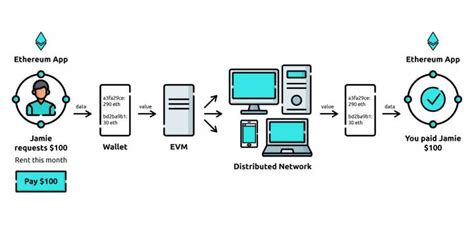CRYPTOCURRENCY
Ethereum: How is a side-chain merging back to Bitcoin chain protected against double-spend? Where are the side-chain mining fees?
Double grade protection on Ethereum: connection and fee of the side chain
As the second largest market capitalization, Ethereum is constantly developing so that its users have safe and reliable ways of conducting transactions. One of these efforts includes the process of connecting the side chain, which aroused interest in understanding how double spurish protection for Ethereum side chains works.
What is a side chain?
The side chain refers to a separate blockchain, which operates next to the main Ethereum network. This means that each side chain works independently with its own set of rules and transactions, enabling them to process different types of data or cases of use. In the context of Ethereum, the side chains are usually used for decentralized financial applications (DEFs) and other specialized projects.
Double spurish protection on Ethereum
Ethereum implemented various means to prevent two -time attacks on the main network. A common attack vector is a “double -grade” problem, in which a single transaction is issued twice in different blocks or chains. To reduce this risk, the Ethereum project contains several safety functions:
- Tracking transactions : each block contains a unique “block number” and “time marker”, enabling accurate tracking of the transaction.
- Intelligent validation based on contracts : Intelligent contracts in the Ethereum network can verify the validity of transactions and prevent it from issuing twice.
- Poetry connection algorithm (PMA) : The PMA algorithm ensures that all blocks from a specific source are connected to one block, preventing duplicate transactions.
side chain connection process

When the side chain connects to the home blockchain, the process is designed to be trouble -free and safe. Here is a review of how it works:
- Verification : The side chain checking team checks that all transactions on the side chain are important and in line with the Ethereum principles.
- Blocks : The PMA algorithm ensures that all side chain blocks are integrated in one block, eliminating duplicate transactions.
- Blockchain update : Blockchain is updated to reflect the connected block, ensuring that users will have access to their funds.
Double protection in the side chain
The double degree protection mechanism is implemented at both the transaction level and blocks. When the side chain connects to the parent blockchain, all side chain transactions are approved in relation to the principles of the parent chain. This prevents a single transaction or transaction set twice.
Where are the mining fees on the side?
The side chains work independently, but often divide resources and infrastructure with the main Ethereum network. As such, the mining charges on the side chains may be similar to fees in the main network. The structure of fees for the extraction of the side chain may vary depending on the factors, such as the distribution of the block prize, fees for transactions and network overload.
Application
The Ethereum side chain process was designed to protect users against double -level attacks while maintaining trouble -free integration with the home blockchain. Understanding how the side chains and existing safety measures work, Ethereum users can confidently use their chain resources without fear of safety risk.
